Trips

Between Polar Bears and Wolves 2023
February usually is the coldest month at the coast of Hudson Bay. Temperatures can be as low as -40°C (-40°F), even without the windchill. And there is plenty of wind there, even ground blizzards with blue skies above. The rewards for enduring these conditions are big, though. The first three weeks of our stay, our quest was to find polar bear moms with their cubs heading from their denning area to the sea ice. The remainder of our trip was more focused on observing and studying the local pack of cloud wolves. While conditions were unusually cold, even for this area, this was by far our most successful and rewarding trip ever!

The Big Freeze 2022
Same, but different. This pretty much summarizes all of our trips to Nanuk Polar Bear Lodge so far. Despite this being our fifth trip to Nanuk, every experience has been unique every time. The weather conditions can easily vary by 30°C (54°F), even on the exact same date. These changes also affect wildlife a lot. Usually, having an early freeze-up of Hudson Bay means less polar bears on shore, while a late freeze will basically ground the polar bears for additional days or weeks.
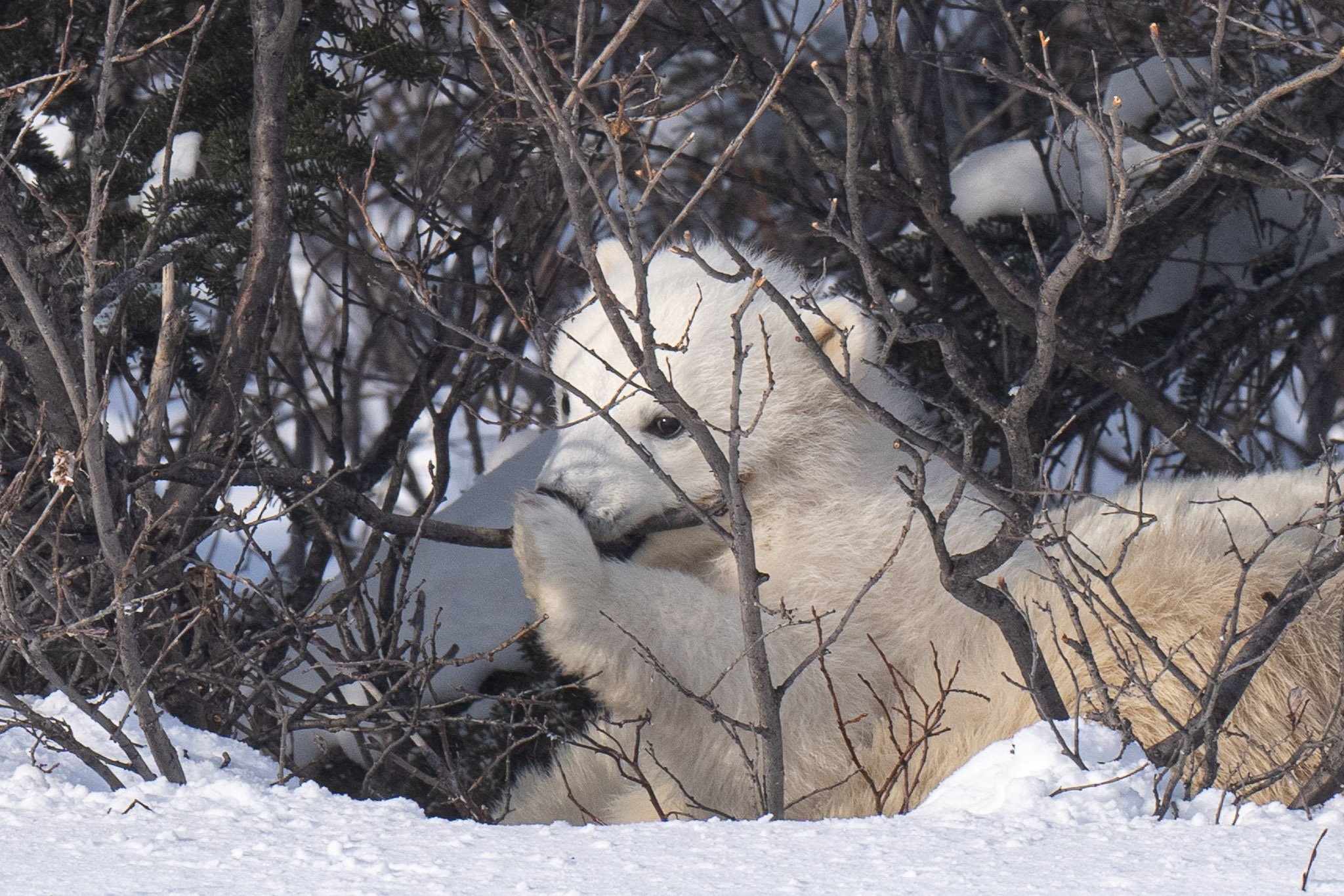
Nanuk in Winter 2022
In winter, Hudson Bay is mostly covered with ice. The rivers and lakes are frozen at least a meter thick. Temperatures around -40°C (-40°F) are not unusual, and that‘s without the wind chill. Taking this effect into account, it can feel like -60°C (-76°F). Who would be living in a place like this? And who would even be traveling there? Even in the middle of winter, the coast of Hudson Bay is home to a surprising variety of animals. There are wolves, moose, foxes, owls, other birds and smaller critters like, hares and lemmings. And there are polar bear moms with their newborn cubs, making their way from the denning area to the sea ice of Hudson Bay. These are plenty of reasons to put on an additional layer or two and head out into the brutal cold of the Arctic winter.
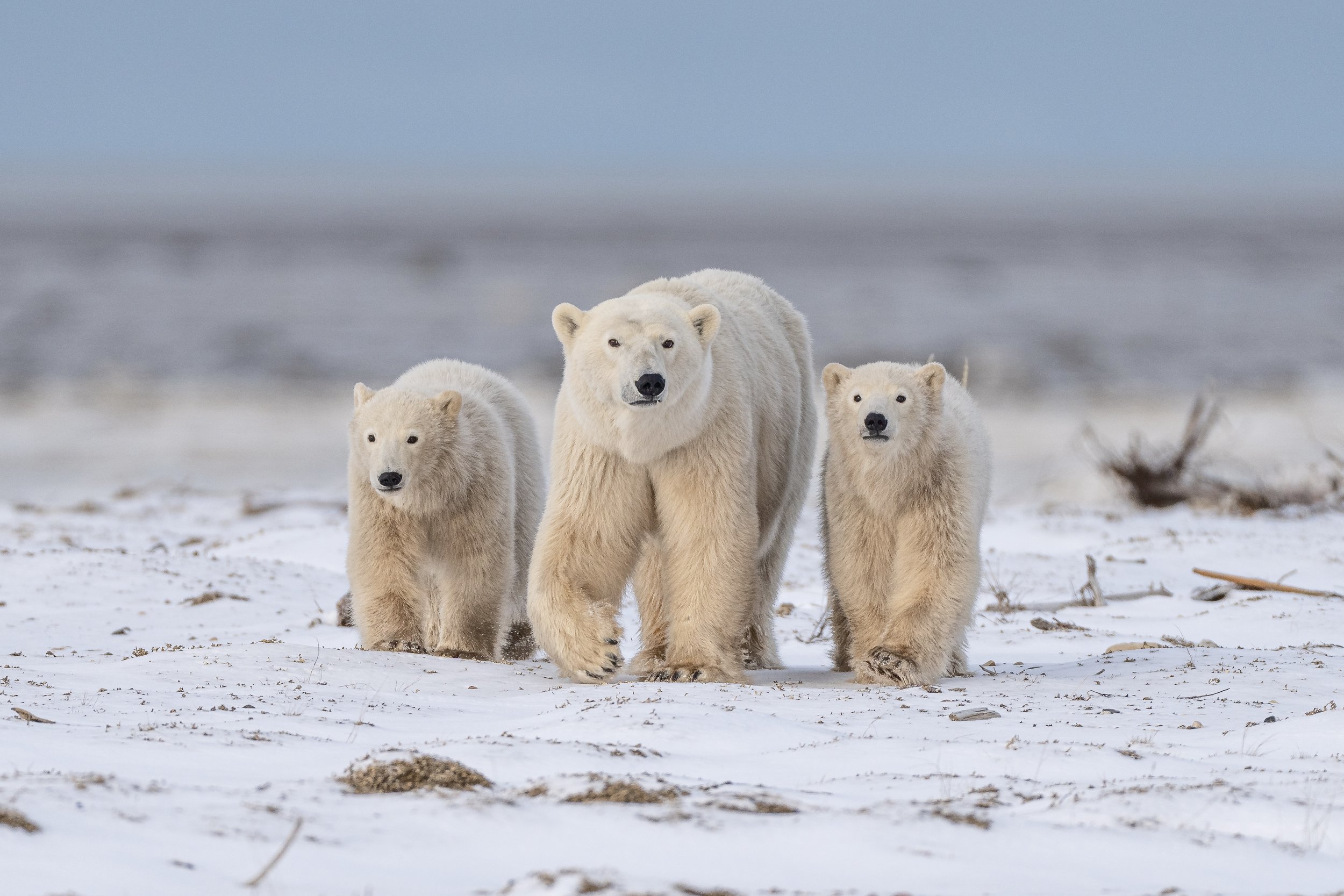
The Big Freeze 2021
In November, temperatures are usually dropping rapidly in northern Manitoba. As soon as the shallow waters of Hudson Bay start freezing over, the local polar bears are heading out on the sea ice, their favorite hunting grounds. But this year was different. We arrived at Nanuk Polar Bear Lodge in early November and there was no snow or ice yet. During our three week stay at the lodge, we could see and feel the Arctic winter approaching. When we left at the end of November, everything was deep frozen with temperatures below -20°C (-4°F). Experiencing the change of seasons was very special.

Hudson Bay Odyssey 2021
Traveling to the Arctic has largely been impossible for the past 18 months due to the pandemic. While we fully agreed with these measures - nobody would want to carry any severe illness to the most remote communities of the far north - we nevertheless felt „fernweh“ for the Arctic. Therefore, when Canada reopened its borders to international travelers, we decided to travel to our favorite spot, the Hudson Bay Coast of Manitoba, in fall. We have never been there when it was not deep frozen. We soon realized, that this region is just as beautiful in fall than it is in winter.
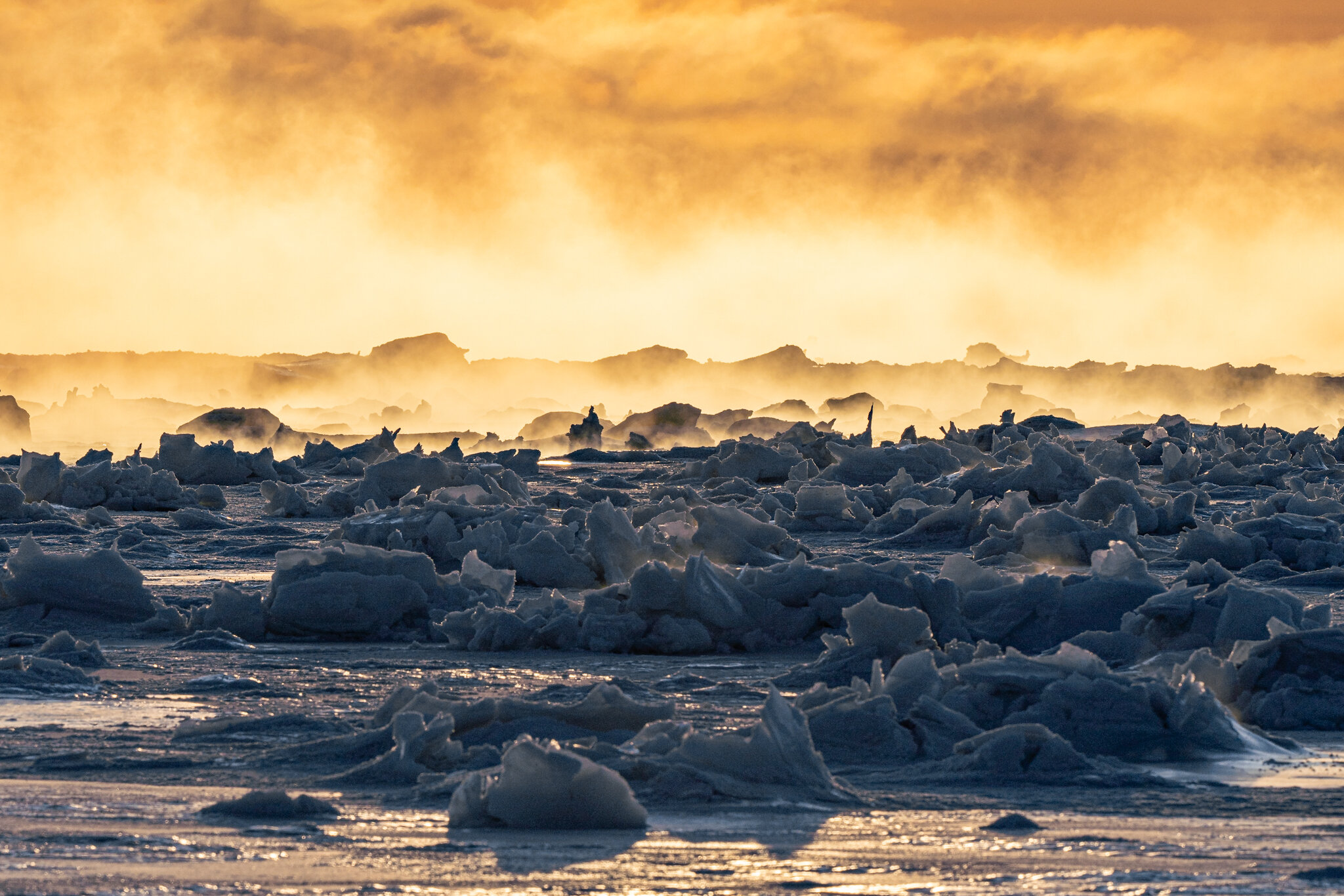
Shoot the Light 2019
The weather has been unusually mild in Manitoba in October. Suddenly, an early November winter storm brought the temperatures down to -20°C (-4°F). Therefore, the conditions to see polar bears upclose should be ideal. This was our second November trip to Seal River Heritage Lodge and it was again a wonderful expedition.

Den Emergence Quest 2019
In November, the Hudson Bay polar bears are eagerly waiting for the bay to freeze over, because that is where they find their favorite food during winter: seals. But not all bears spend the winter on sea ice. During this time, the mother bears search for a sheltered cave onshore where they can give birth to their offspring in December or January. Temperatures of -40°C prevail during this time, and that would be much too cold for the little bears. That is why the young bear family spends the first few months in the snow cave. Only when the temperatures rise to about -20°C do the mother bears dare to leave their caves, the so-called “dens.” A strenuous march towards Hudson Bay begins, because for the female bears, the last proper seal meal was nearly 10 months ago. It was at this time that we took a journey to the wild Kaska Coast of the Hudson Bay in the hope of possibly observing such a young bear family as they leave their cave.
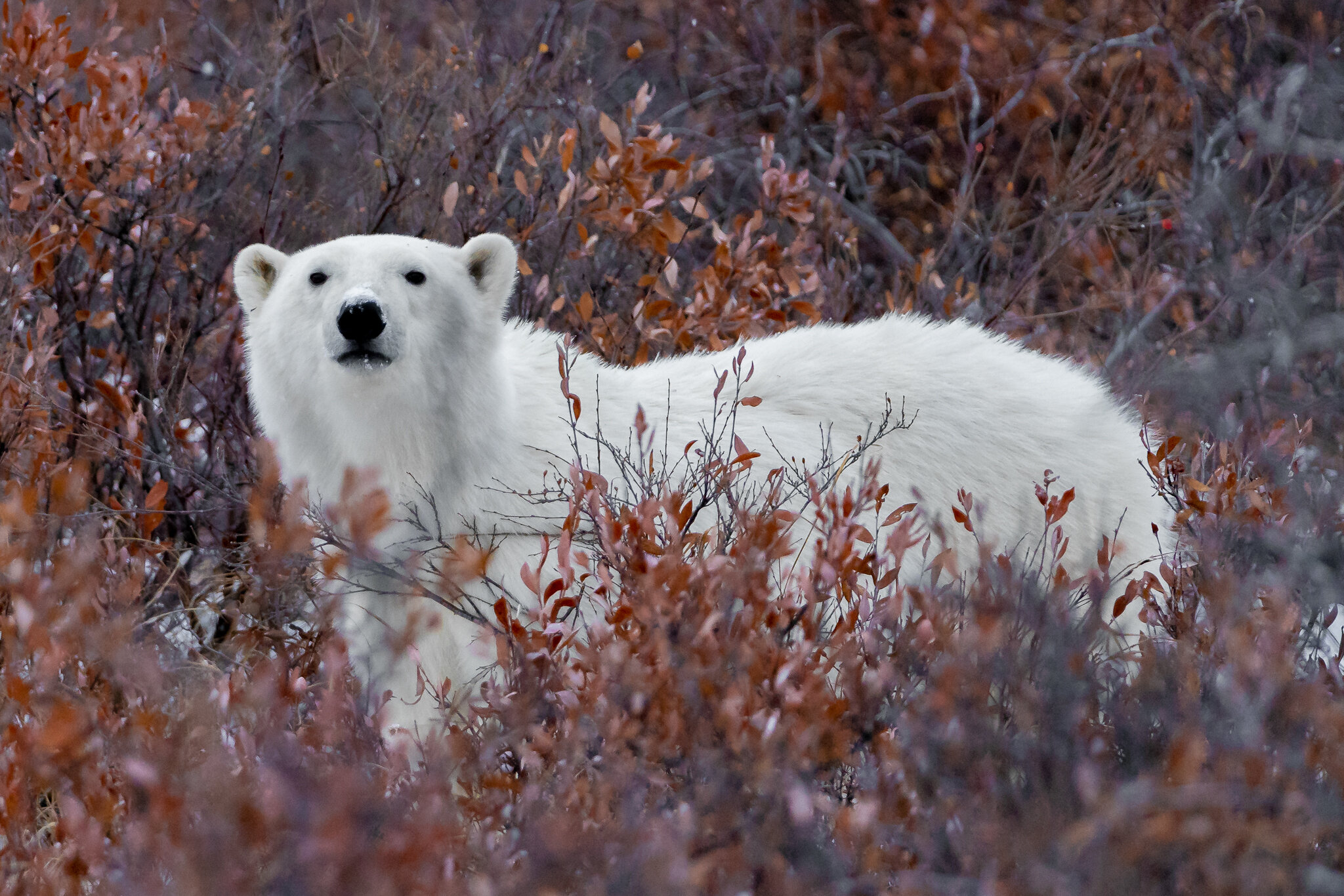
Churchill 2018
Churchill, Manitoba, is located at 58°N. Despite being well south of the Arctic Circle, the climate is colder than in many places further north. Temperatures are dropping to -20°C (-4°F) already in early November. This is polar bear season in Churchill. The bears are gathering at the coast of Hudson Bay to wait for the sea ice to form. Only then will they be able to go hunting for their favorite prey: seals. Our trip to Churchill took place in the middle of polar bear season and allowed for close encounters with these fascinating predators.

Ellesmere Island 2015
Expedition Ellesmere Island - as far north as the ice situation will allow. Where most ships will turn south into the heart of the Northwest Passage, we turned north into the fjords of Ellesmere Island and Axel Heiberg Island. This region is rarely visited due to its remote location and also due to the usually quite heavy sea ice present.

Northern Sea Route 2014
As early as the 16th century, Willem Barents made his first expedition to the Arctic Sea north of Russia. At that time, the Arctic was largely terra incognita and with the existing technology, there was no way to explore this region in depth. It wasn’t until around 150 years ago, that the Swedish explorer Adolf Erik Nordenskjold successfully sailed from Sweden to Japan through the Northern Sea Route. This expedition took more than a year, which for commercial purposes was not yet interesting. With the increasingly warmer temperatures in the Arctic, Russia tries to position the Northern Sea Route, or Northeast Passage, as a reliable and safe sea route.
In 2014, MS Hanseatic planned to sail from Nome (Alaska, USA) to Bodø (Norway) through this legendary passage. It was the first non-Russian passenger ship ever to attempt this adventure. Hapag Lloyd Cruises, the company owning MS Hanseatic, invested more than 10 years of meticulous planning to make this possible.

Svalbard 2009
Our first trip to the Arctic made us fall in love with this region. However, it wasn‘t until our trip to Svalbard, with a surprise stop in Greenland, that the „polar virus“ really got us. While the sun never sets for several months, the light is constantly warm and golden, something that is unique to the Arctic.
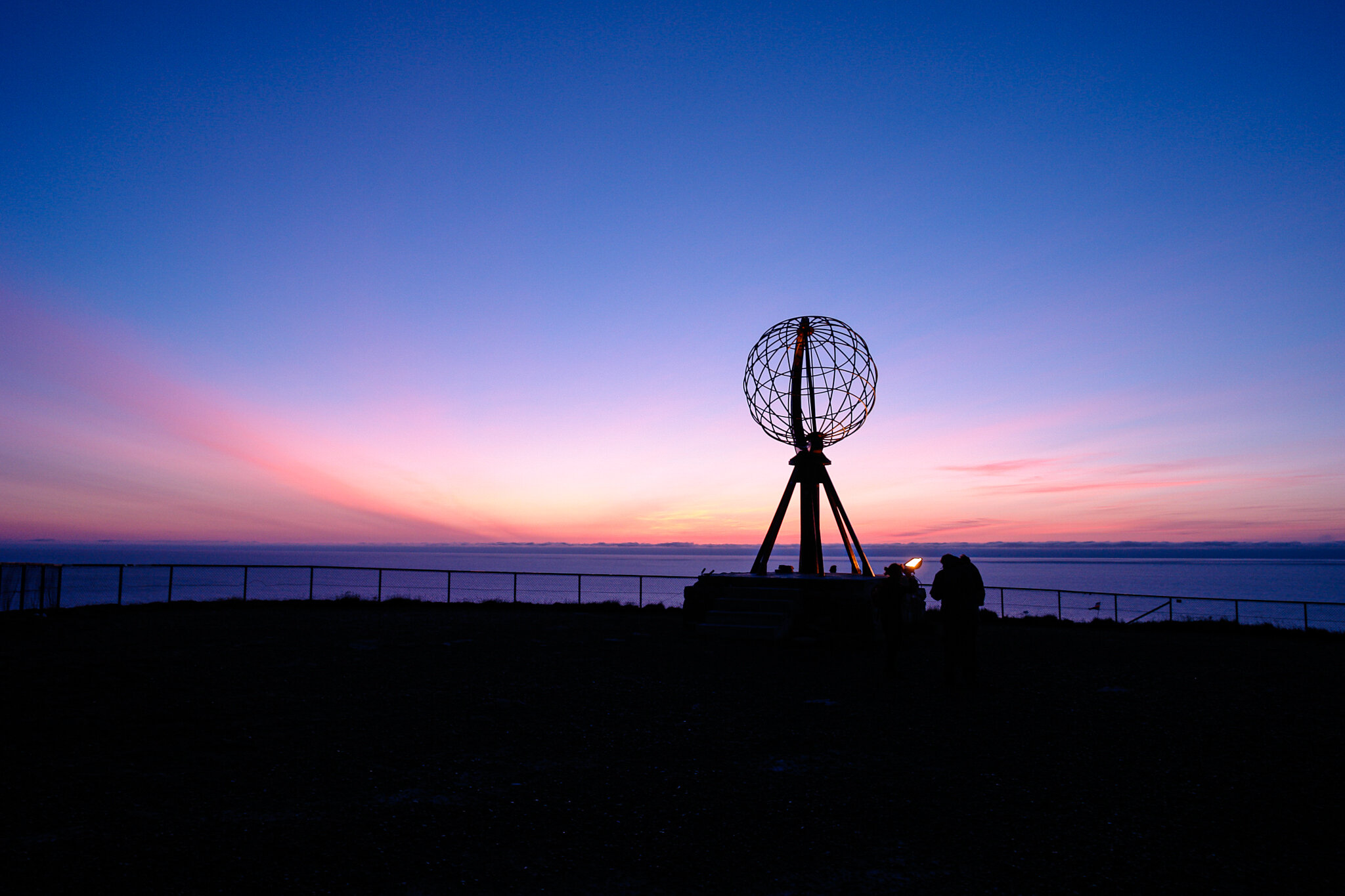
North Cape 2008
When traveling to a place on your personal bucket list, you expect to cross that place off your list. In our case, we instead changed our entire bucket list after our first trip to the Arctic.
